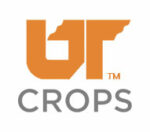LINKS
Distinguishing Between Bollworm and Tobacco Budworm
It is very important, particularly in non-Bt cotton, to distinguish between infestations of bollworm and tobacco budworm. This is because tobacco budworm populations are highly resistant to pyrethroid insecticides, and spraying budworm populations with a pyrethroid insecticide will typically result in failure. The following methods can be used to help distinguish between bollworm and tobacco budworm infestations.
Moth ID and Flushing: Bollworm and tobacco budworm moths can be identified when they a flushed during the scouting process. If tobacco budworm moths are observed, it should be assumed that at least some of the larvae in non-Bt fields are budworms. Moth pheromone traps may also give an indication about the relative size of bollworm and tobacco budworm populations. Be aware that tobacco budworm populations can vary greatly within an area, and moth trap catches may not be representative of larval infestations in a field.
Larval ID: The larvae of bollworm and tobacco budworm can be distinguished by the morphology of their mandibles and by the appearance of setae (hairs) on the abdomen. Tobacco budworms have an extra tooth on the inner surface of each mandible. Budworms also have microspines present around the setae (hairs) on the 1st, 2nd, and 8th abdominal segments. Unfortunately, these techniques are cumbersome and less reliable on small larvae, and insecticide controls should be applied against freshly hatched caterpillars.
Egg ELISA Kits: With the aid of a microscope, there are some differences in the appearance of bollworm and budworm eggs that can be used to help distinguish between these species. However, the most reliable method is the use of ELISA techniques. This involves a cookbook approach to identifying eggs that have been collected from one or more fields. It is highly effective but requires 2-3 hours time to complete a bioassay (although most of this time involves waiting during incubation steps). ELISA kits and additional information are available from Agdia Inc.
Identification of Bollworms and Tobacco Budworms in Cotton (PDF publication)







